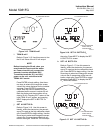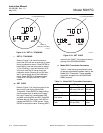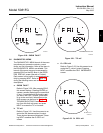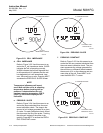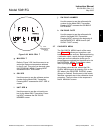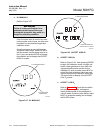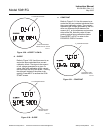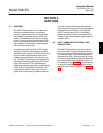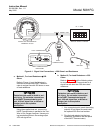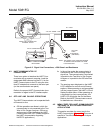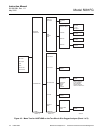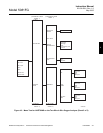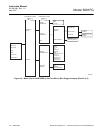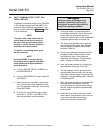
Instruction Manual
IB-106-5081, Rev. 1.0
May 2005
Rosemount Analytical Inc. A Division of Emerson Process Management HART/AMS 4-1
Model 5081FG
SECTION 4
HART/AMS
4-1 OVERVIEW
The HART Communicator is a handheld com-
munications interface device. It provides a
common communications link to all microproc-
essor-based instruments that are HART com-
patible. The handheld communicator contains
an 8 x 21 character liquid crystal display (LCD)
and 25 keys. A pocket-sized manual, included
with the HART Communicator, details the spe-
cific functions of all the keys.
To interface with the Two-Wire In Situ Oxygen
Analyzer, the HART Communicator requires a
termination point along the 4-20 mA current loop
and a minimum load resistance of 250 ohms
between the communicator and the power sup-
ply. The HART Communicator accomplishes its
task using a frequency shift keying (FSK) tech-
nique. With the use of FSK, high-frequency
digital communication signals are superimposed
on the 4-20 mA transmitter current loop. The
communicator does not disturb the 4-20 mA
signal since no net energy is added to the loop.
The HART Communicator may be interfaced
with a personal computer (PC) providing special
software has been installed. To connect the
HART Communicator to a PC, an interface
adapter is required. Refer to the proper HART
Communicator documentation regarding the PC
interface option.
4-2 HART COMMUNICATOR SIGNAL LINE
CONNECTIONS
The HART Communicator can connect to the
Two-Wire In Situ Oxygen Analyzer analog out-
put signal line at any wiring termination in the 4-
20 mA current loop. There are two methods of
connecting the HART Communicator to the sig-
nal line. For applications in which the signal line
has a load resistance of 250 ohms or more, re-
fer to method 1 and Figure 4-1. For applications
in which the signal line load resistance is less
than 250 ohms, refer to method 2 and Figure
4-2.
4



